Forest walk to Sublime Point track
Illawarra Escarpment State Conservation Area
Overview
Combining several hiking tracks, this extended day walk is one of the region’s best, taking in scenic views of the coast and Sydney, with access to nearby forest picnic spots.
- Distance
- 14km one-way
- Time suggested
- 5 - 6hrs
- Grade
- Grade 4
- Trip Intention Form
-
It's a good idea to let someone know where you're going. Fill in a trip intention form to send important details about your trip to your emergency contact.
- Opening times
The walking tracks are always open, though it is recommended that the extended hike is only attempted in daylight hours.
- What to
bring - Hat, sunscreen
- Please note
- The southern end of Forest walk joins the Woodward track, which adjoins Sublime Point. Sublime track runs between Sublime Point and Austinmer.
- The weather in this area can be unpredictable, so please make sure you’re well-prepared for your visit.
- Remember to take your binoculars if you want to birdwatch
The Illawarra Escarpment offers a full range of exciting walks. This extended hike combines several of the best, threading through magnificent cliff-top rainforest and dry eucalypts.
Start the walk at either Coalcliff (Wodi Wodi track) or Austinmer (Sublime Point track). Both trackheads are a short stroll from the train station. Your path then ascends sharply before snaking a leisurely 11km along Forest walk. Views are superb across the panoramic coast below, as you wander through upland swamps and tall blackbutt-apple shale forest. You’re bound to capture some inspiring photos here.
You can cap it all off with a post-trek barbecue: at Sublime Point lookout, the track takes a steep turn down to Austinmer via a narrow cliff ledge and several ladders. The nearby Lady Fuller park, featuring picnic tables and toilets, offers a fitting end to your challenging, but rewarding hike.
Take a virtual tour of Forest walk to Sublime Point track captured with Google Street View Trekker.
Map
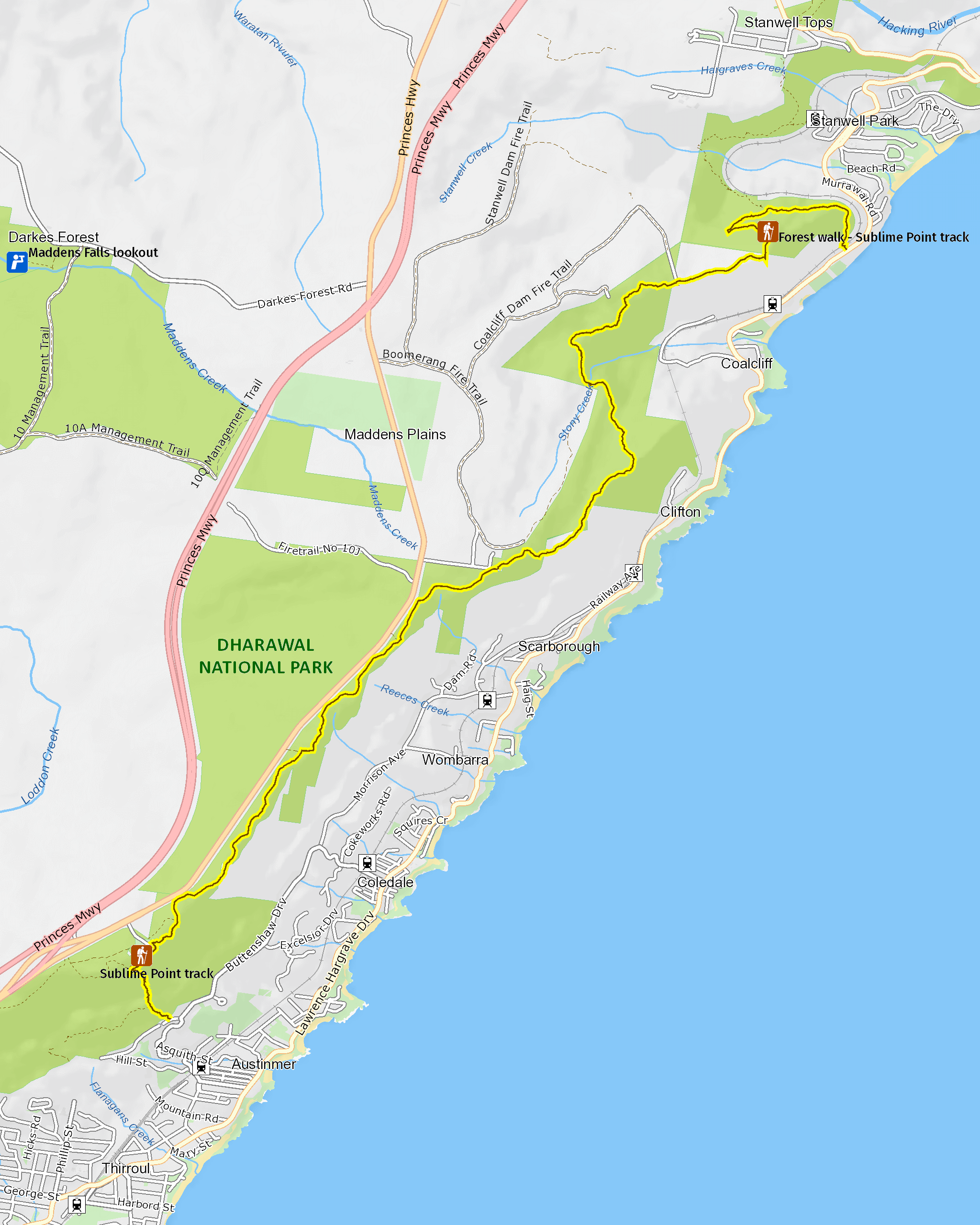
Map legend

Local alerts
For the latest updates on fires, closures and other alerts in this area, see https://uat.nswparks.cloud/things-to-do/walking-tracks/forest-walk-to-sublime-point-track/local-alerts
General enquiries
- National Parks Contact Centre
- 7am to 7pm daily
- 1300 072 757 (13000 PARKS) for the cost of a local call within Australia excluding mobiles
- parks.info@environment.nsw.gov.au
Park info
- in Illawarra Escarpment State Conservation Area in the South Coast region
Illawarra Escarpment State Conservation Area is always open but may have to close at times due to poor weather or fire danger. However, it is recommended that bushwalking only be undertaken during daylight hours because of the presence of cliff edges and other hazards.
Visitor info
All the practical information you need to know about Forest walk to Sublime Point track.
Maps and downloads
Learn more
Forest walk to Sublime Point track is in Illawarra Escarpment State Conservation Area. Here are just some of the reasons why this park is special:
200 million years and counting
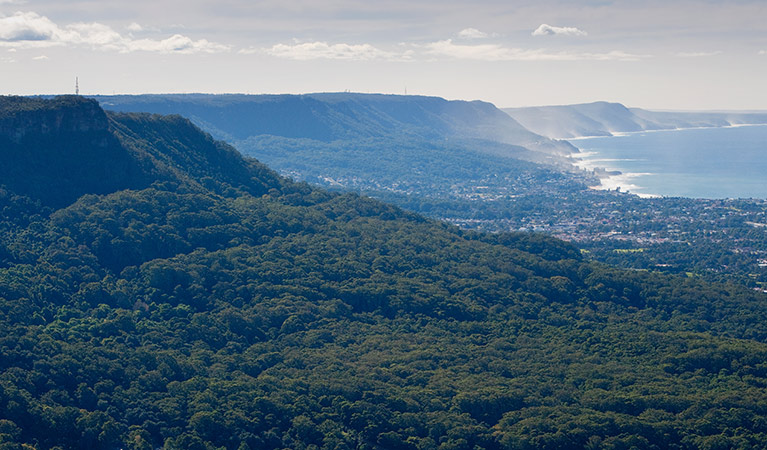
The 500-metre-high Illawarra Escarpment provides a dramatic backdrop to the city of Wollongong and spans 200 million years of geological history. The escarpment is so notable, it's currently listed as a 'Scenic Landscape of State-wide Significance' on the Register of the National Trust of Australia (NSW).
- Forest walk to Sublime Point track Combining several hiking tracks, this extended day walk is one of the region’s best, taking in scenic views of the coast and Sydney, with access to nearby forest picnic spots.
- Mount Keira Ring track Encircling Mount Keira, the ring track passes through the varied terrains and forests of the Illawarra Escarpment, starting and finishing in a perfect picnic spot.
- Sublime Point walking track For a challenging walk through rainforest, Sublime Point walking track offers great birdwatching and scenic views across Illawarra Escarpment State Conservation Area.
Going bush
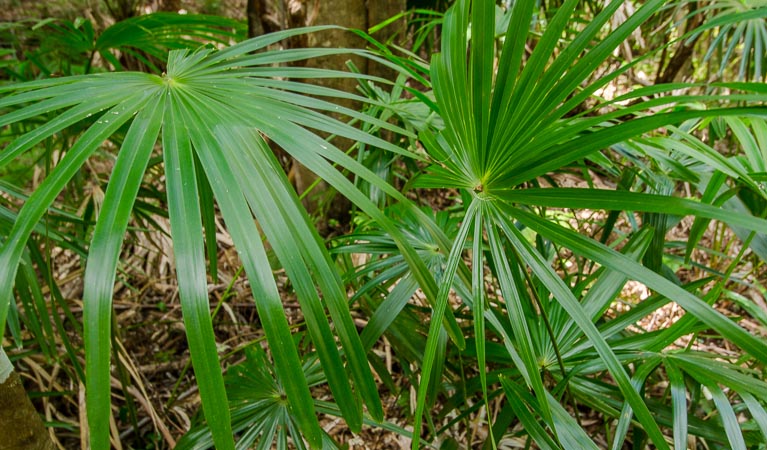
The Illawarra Escarpment contains the most extensive area of rainforest in the Sydney basin and forms a crucial corridor between Royal National Park and the South Coast. The area acts as an important refuge for species that are affected by environmental disturbances such as development and bushfires. There are currently 12 threatened animal species in the area. You might even spot a lyrebird, the wildlife emblem of the National Parks and Wildlife Service.
- Byarong Park picnic area Easily accessible and featuring all the facilities needed to enjoy a barbecue, the popular Byarong Park picnic area also offers walking track access and birdwatching.
- Forest walk to Sublime Point track Combining several hiking tracks, this extended day walk is one of the region’s best, taking in scenic views of the coast and Sydney, with access to nearby forest picnic spots.
How it all began
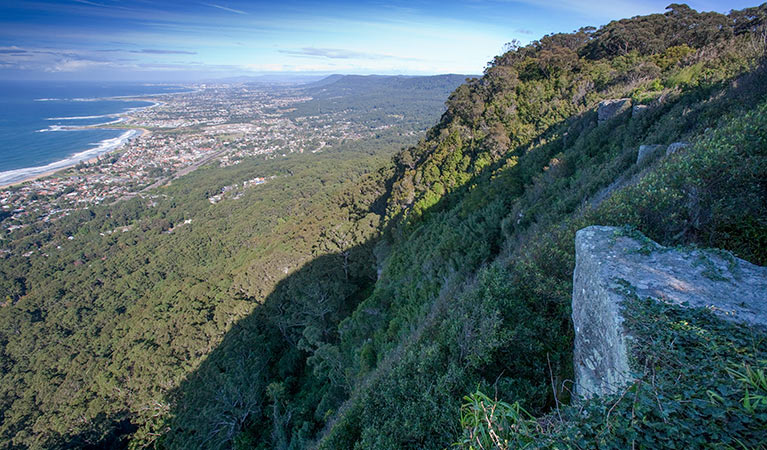
The Illawarra Escarpment lands were occupied by the Wodi Wodi Aboriginal people for 20,000 years. As such, they are a source of cultural legends and of continuing spiritual significance: Mount Kembla and Mount Keira, for example, feature in a number of creation stories. The conversation area also contains traditional routes of travel between the coastal plain and the plateau.
- Mount Kembla Ring track Taking in a significant Aboriginal site, local heritage, stunning scenic rainforest and a notable landmark, the Mount Kembla Ring track offers a taste of everything.
Our colonial past
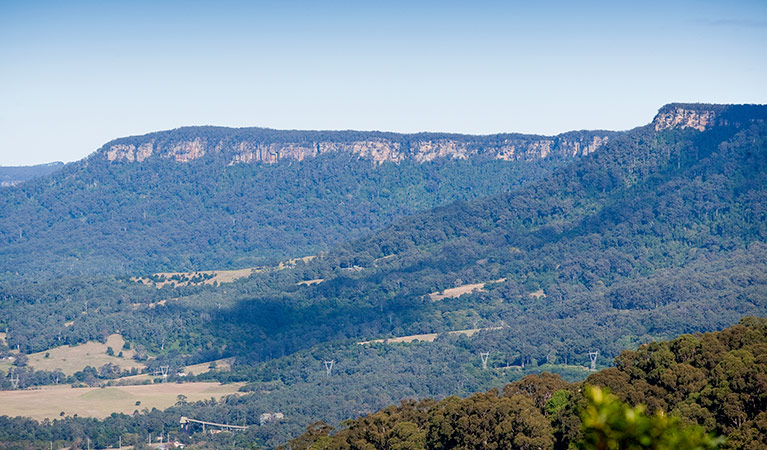
The Illawarra Escarpment area is full of important local heritage, including colonial roads like the ones constructed by Surveyor-General Thomas Mitchell around 1834. Some were even built by convicts. Keep your eyes open for buildings, portals, rail tracks and other features from former farming and coal mining.
- Mount Keira Ring track Encircling Mount Keira, the ring track passes through the varied terrains and forests of the Illawarra Escarpment, starting and finishing in a perfect picnic spot.
Weekend city escape
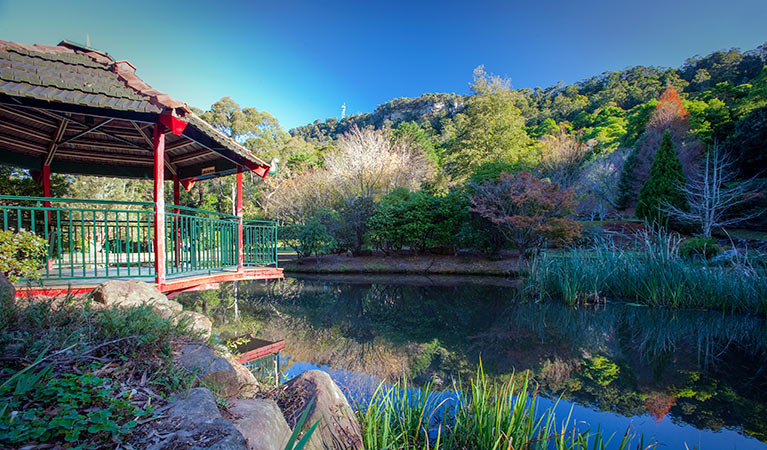
Illawarra Escarpment State Conservation Area's convenient proximity to the city and public transport options means it has become an important venue for sports and recreation - on weekends it buzzes with hikers, picnickers, and cyclists.
- Byarong Park picnic area Easily accessible and featuring all the facilities needed to enjoy a barbecue, the popular Byarong Park picnic area also offers walking track access and birdwatching.
- Robertson lookout The most scenic views of Mount Keira can be found at Robertson’s lookout, and tables make this a terrific picnic spot as well.
Plants and animals protected in this park
Animals
-

Superb lyrebird (Menura novaehollandiae)
With a complex mimicking call and an elaborate courtship dance to match, the superb lyrebird is one of the most spectacular Australian animals. A bird watching must-see, the superb lyrebird can be found in rainforests and wet woodlands across eastern NSW and Victoria.
-

Peron's tree frog (Litoria peroni)
Peron’s tree frog is found right across NSW. These tree-climbing and ground-dwelling Australian animals can quickly change colour, ranging from pale green-grey by day, to a reddish brown with emerald green flecks at night. The male frog has a drill-like call, which has been described as a 'maniacal cackle’.
-

Grey-headed flying-fox (Pteropus poliocephalus)
The grey-headed flying fox is Australia's largest native bat, with a wingspan up to 1m. This threatened species travels up and down south-eastern Australia and plays a vital role in pollinating plants and spreading seeds in our native forests.

